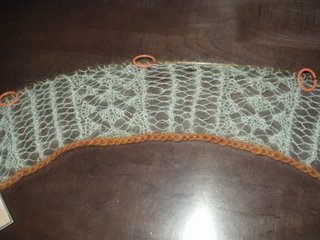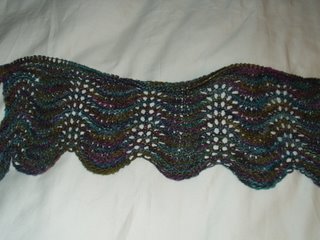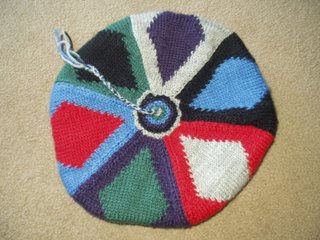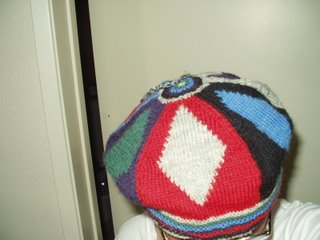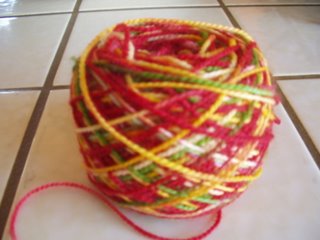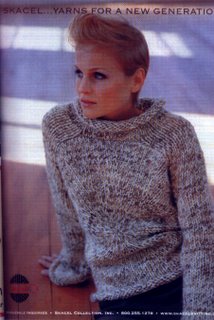
DISASTER: Schoeller-Stahl Excellent mouliné sweater
I saw the picture above in Interweave knits and was captivated by it. I went to our yarn store and bought the Schoeller-Stahl Winter 2003-2004 book that contains this pattern. The pattern is interesting in that it contains a circular front and back knitted on 10.75 double pointed needles. Apparently, this is an unusual size for dpns; fortunately, Brittany makes them and I was able to get them at our yarn store. I heard now that Crystal Palace is also carrying this size dpns.
The original pattern in the Schoeller-Stahl book is useless and should be avoided at all costs. The instructions were plain wrong and I actually had to frog my sweater a couple of times, thinking it was my error (see below). The way the instructions are written, the sweater is not turning out like the model in the picture. In frustration, I brought the pattern and my knitting to the yarn store for assistance. None of the teachers could figure out the pattern. The owner, who is a native of Germany, said that even the German instructions of the pattern do not make sense!
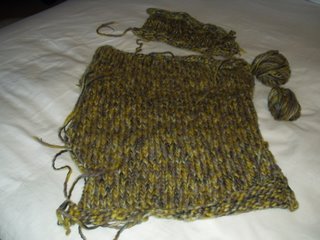
Finally, the owner decided to contact Skacel, who now owns the pattern for some reason. She was faxed over new instructions for the pattern that are unlike the original that is in the book. I have yet to go back and reknit the project using the Skacel instructions; it still boggles me how a company like Schoeller-Stahl could put out such a defective pattern. They should pay me for the cost of the book. The instructions from Skacel also specify easier to find size 10.5 or 11 dpns.
The lesson here is if any of you are taken in by the pattern while perusing a knitting magazine, DO NOT use the pattern in the original Schoeller-Stahl book. Have your yarn store contact Skacel to email or fax you the correct pattern.


